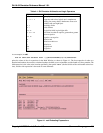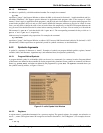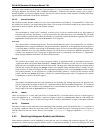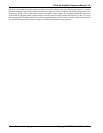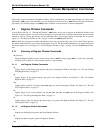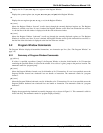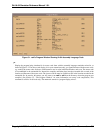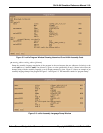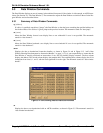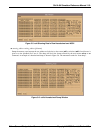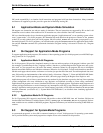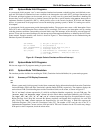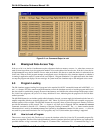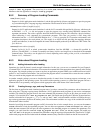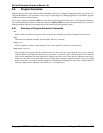
Copyright © 2000 Hewlett-Packard Co. Screen Manipulation Commands 5-5
Ski IA-64 Simulator Reference Manual 1.0L
5.3 Data Window Commands
The Data Window displays an area of memory in hexadecimal format and, if the window is wide enough, an ASCII trans-
lation. (See Section 3.6, “The Data Window”.) The commands to adjust the Data Window are similar to those for the Pro-
gram Window and are described below.
5.3.1 Summary of Data Window Commands
dj [address]
If address is specified, repositions (“jumps”) the Data Window so that the bytes containing the specified address are
first in the window. If no address is given, jumps to the previous location. The mnemonic stands for “data jump”.
df [count]
Moves the Data Window forward count display lines or one windowful if count is not specified. The mnemonic
stands for “data forward”.
db [count]
Moves the Data Window backward count display lines or one windowful if count is not specified. The mnemonic
stands for “data backward”.
dbndl
Displays the data as hexadecimal instruction bundles, as shown in Figure 5-4 and in Figure 3-15, “xski’s Data
Window Showing Data Interpreted as Instruction Bundles,” on page 3-11. It is your responsibility to ensure that the
Data Window is actually positioned on instructions; if not, Ski will dutifully display nonsense. The first column
displays the address. The second column displays the template field. The remaining three columns display the 41-bit
instructions from slots 0, 1, and 2, with the least-significant bit to the right. The mnemonic stands for “data window
bundle”.
dh
Displays the data as raw hexadecimal with an ASCII translation, as shown in Figure 5-5. The mnemonic stands for
“data window hexadecimal”.
Figure 5-4.
xski
Showing Data as Instruction Bundles



